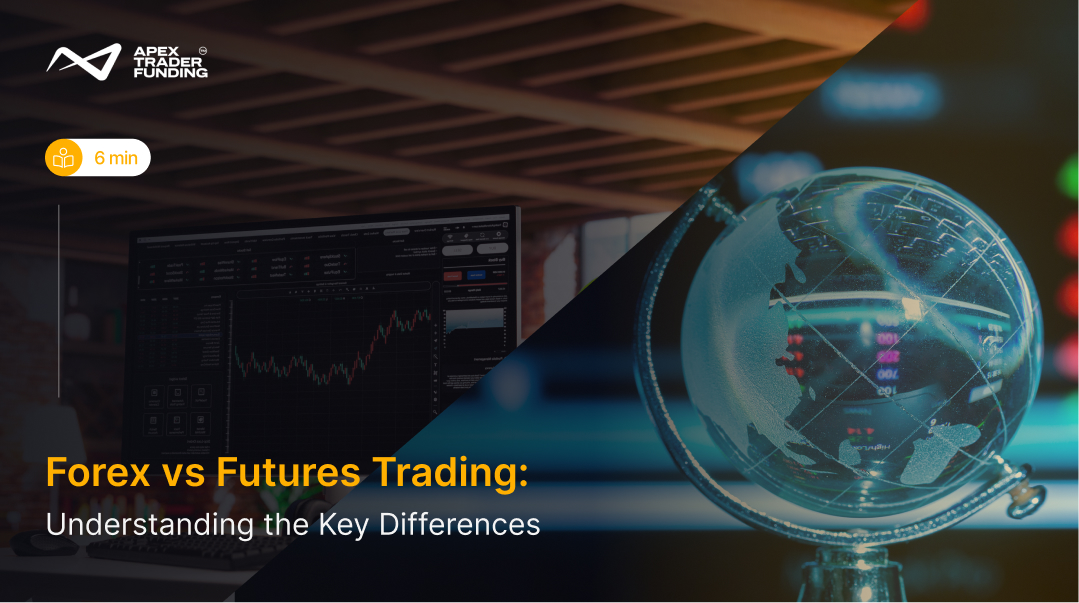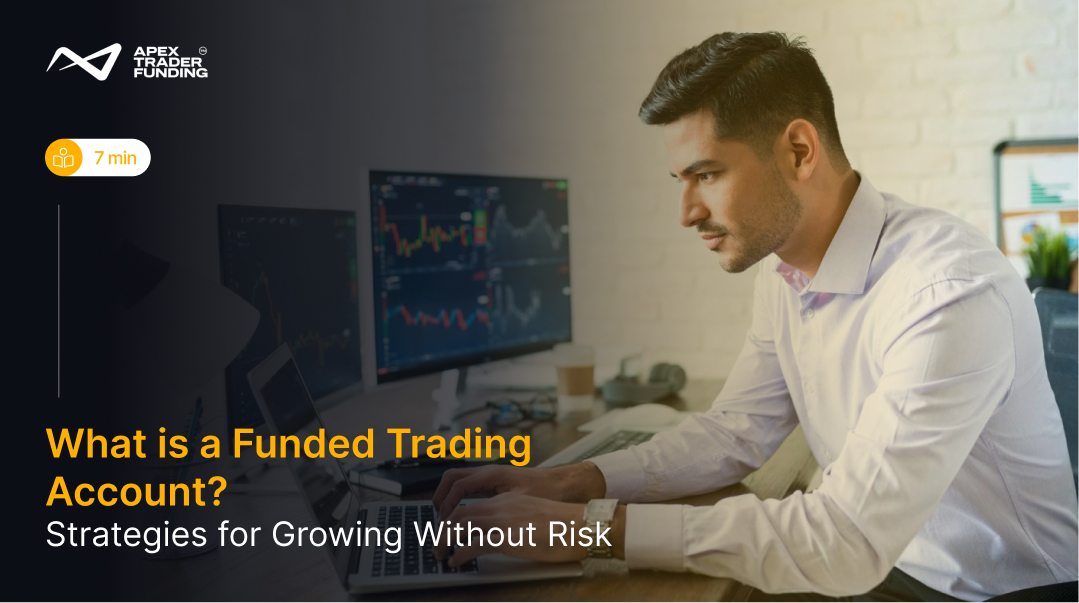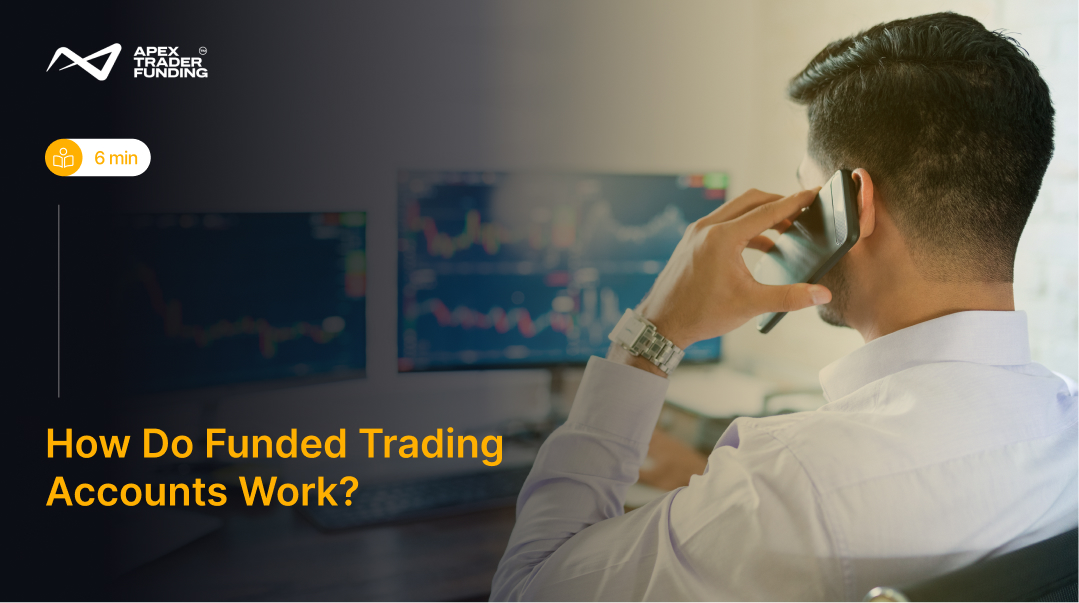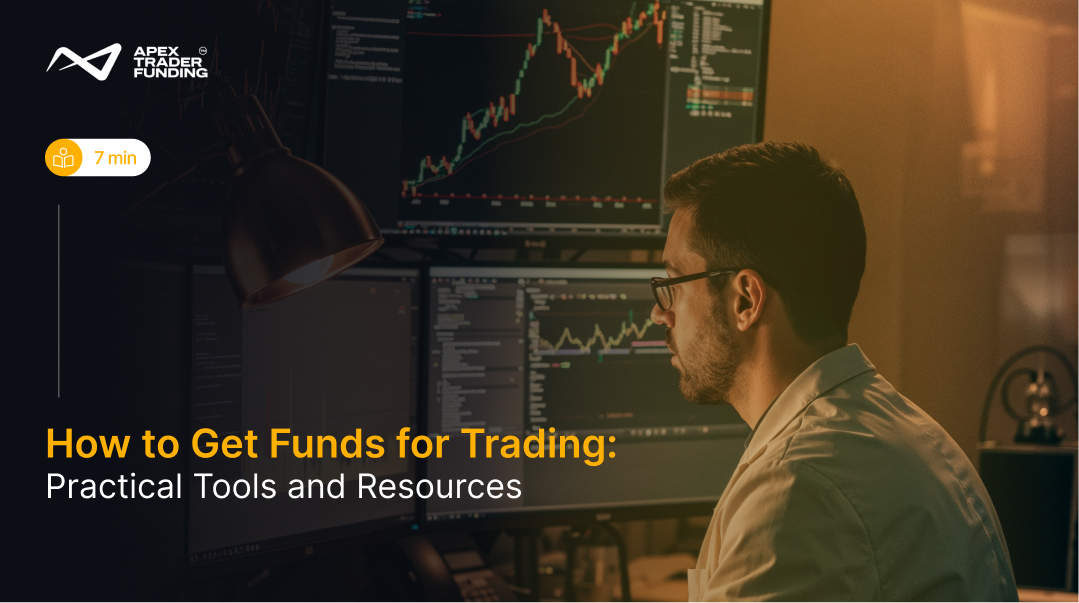
trading-education | 07-10-25
The world of trading offers multiple pathways, but two markets often stand out for new and experienced traders alike: forex (foreign exchange) and futures. While both involve speculation on price movements and opportunities to profit, they differ in structure, regulation, and the skills required to succeed.
Understanding these differences is crucial for anyone deciding where to focus their energy and capital. Below is a side-by-side comparison to give you a clear snapshot before we dive deeper.
What is Forex Trading?
Forex trading, short for foreign exchange trading, involves buying and selling currency pairs like EUR/USD or GBP/JPY. The forex market holds the title of the world’s most active financial arena, with daily turnover surpassing $6 trillion in trades. Unlike centralized exchanges, forex operates in a decentralized global network, meaning transactions flow through banks, brokers, and electronic systems across different time zones.
Traders are drawn to forex because of its round-the-clock accessibility (24 hours a day, 5 days a week), high liquidity, and the ability to speculate on global economic shifts, interest rate policies, and geopolitical events. However, the availability of high leverage makes forex both an opportunity-rich and risk-heavy market.
What is Futures Trading?
Futures trading is based on standardized contracts where two parties agree to buy or sell an asset at a set price on a future date. These contracts cover commodities like oil, gold, and wheat, as well as financial assets like stock indices such as the S&P 500, or even financial instruments like interest rates.
Unlike forex, Futures are traded on centralized exchanges like the Chicago Mercantile Exchange (CME). This means all transactions are recorded through a single marketplace, making prices more transparent and regulation stronger.
The structured nature of futures means traders work under strict margin requirements, transparent pricing, and robust regulation. While this market still offers significant leverage, it is generally lower than forex and tightly monitored. Futures trading attracts participants ranging from institutions looking to hedge price risk to retail traders aiming to profit from volatility in global assets.
Forex vs Futures: At a Glance
The Structure of Each Market
Both forex and futures markets have unique structures that shape how trades are executed and managed. Here’s a simple breakdown:
Forex (Foreign Exchange):
- Trades occur through a global network of banks, brokers, and liquidity providers.
- No single exchange controls it, so pricing and regulation can vary by region.
- Flexibility and 24-hour access make it popular with traders who want around-the-clock opportunities.
Futures:
- Contracts are standardized and traded on regulated exchanges such as the CME (Chicago Mercantile Exchange).
- A clearinghouse guarantees trades, which adds security and transparency.
- Rules around margin, settlement, and risk management are uniform, giving participants a more structured framework.
A clearinghouse is like the referee of futures markets — it ensures every trade is fair, honored, and settled, no matter what happens between buyers and sellers.
Risk and Leverage Dynamics
One of the most striking differences is leverage. Forex brokers often provide access to leverage far higher than traditional financial markets, which can magnify both profits and losses. For beginners, this can be enticing but also dangerous without proper risk management.
Futures leverage is typically lower and tied to strict margin requirements set by exchanges. While traders still face significant risks, the guardrails imposed by futures markets encourage a more disciplined approach.
Trading Strategies in Each Market
Forex Strategies: Forex traders often focus on short-term speculation, such as scalping and day trading, using technical indicators, macroeconomic data, and global news events. Since forex is influenced heavily by central bank policy and geopolitical shifts, traders must stay informed on international developments.
Futures Strategies: Futures traders lean on structured, rule-based methods. Popular approaches include trend following, spread trading, and breakout setups. Many traders use futures to hedge against price movements in commodities or indices, making this market appealing to both speculators and institutions.
The Role of Traders in Each Market
Forex Traders: Primarily retail participants and small trading groups aiming to profit from short-term currency moves. Their edge often comes from speed, technical analysis, and reacting quickly to global events.
Futures Traders: A broader mix of retail traders, hedge funds, and corporations. Many institutions use futures to hedge risks, while speculators seek to capture price trends. This balance of hedging and speculation creates a more structured trading environment.
Which Path Should You Choose?
The decision between forex and futures trading ultimately depends on your goals, risk tolerance, and preferred style:
- If you want a flexible, global market open nearly all the time, forex might suit you.
- If you prefer a structured environment with strict rules and transparent oversight, futures can offer more stability and professionalism.
Both markets can be profitable when approached with discipline, education, and the right risk management practices. The key is not choosing the “better” market but the one that best aligns with your skills and objectives.
Final Thoughts
Forex and futures are two very different trading arenas, but both demand discipline and preparation. Traders who take the time to understand their chosen market — from leverage dynamics to strategy requirements — are far more likely to succeed in the long term.
If you’re ready to take your first step into the futures markets, explore structured funding opportunities with Apex Trader Funding. Start small with accounts like the 25K Rithmic or 25K WealthCharts, and trade with professional-grade tools.
FAQs
The “90% rule” in forex refers to a common observation that 90% of retail forex traders lose 90% of their capital within 90 days. While not a strict rule, it highlights the risks of entering the forex market without proper education, risk management, and discipline. It serves as a reminder that consistent strategy and careful money management are more important than chasing quick wins.
The “80% rule” in futures trading is a principle often applied to market profile and range-bound setups. It suggests that if the price enters the previous day’s value area and stays there for two consecutive 30-minute periods, there’s about an 80% chance it will move across the entire value area. Traders use this guideline to plan entries and exits with higher probability, but it’s not a guarantee — risk management is still essential.
Yes, beginners can trade futures, but success requires preparation. Futures markets involve leverage and strict margin rules, so learning the basics, practicing with demo accounts, and using proper risk management tools are essential first steps before committing real capital.
False signals happen when a pattern looks valid but fails to follow through. To minimize them:
1. Wait for confirmation: Enter only after a candle closes beyond support or resistance.
2. Check volume: Strong breakouts usually have higher-than-average volume.
3. Use multiple timeframes: Align short-term setups with broader trends.
4. Apply filters: Combine indicators like RSI or moving averages.
5. Control risk: Keep position sizes small and use stop-losses.
Related Blogs

trading-education | 22-08-25
What is a Funded Trading Account? - Detailed Guide
Trading has traditionally required large amounts of personal capital, leaving many aspiring traders locked out. A funded account changes that...
Read more
trading-education | 23-08-25
How Do Funded Trading Accounts Work?
Many new traders face the same challenge: limited capital and limited experience. Jumping into markets with personal savings often leads...
Read more
trading-education | 25-08-25
How to Get Funds for Trading? - 6 Practical Ways
Starting a trading journey often requires more than knowledge—it requires capital. Yet many aspiring traders face the same challenge: how...
Read more